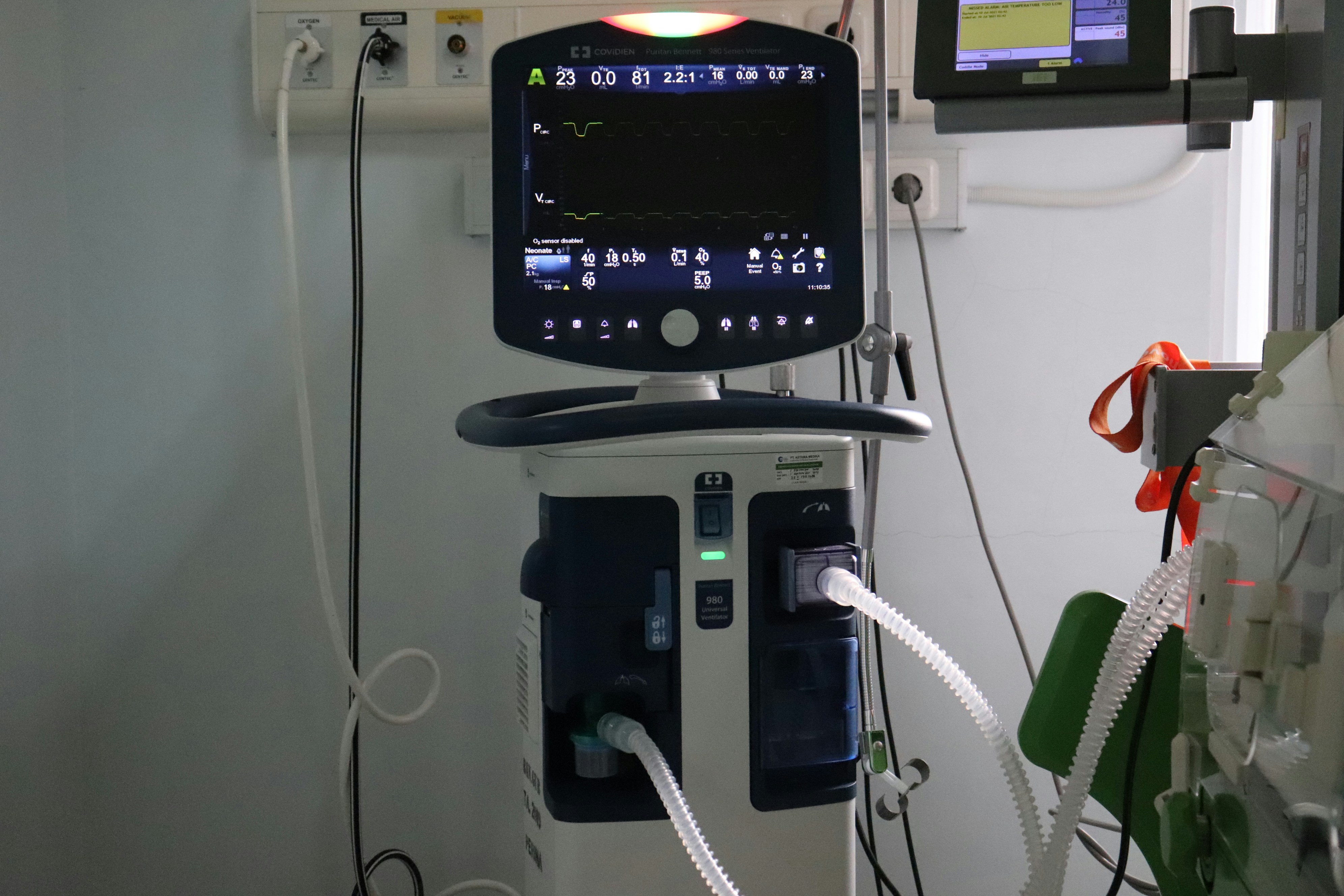
Medical Technology Recruitment Trends 2025 (UK): What Job Seekers Need To Know About Today’s Hiring Process
Summary: UK medical technology hiring has shifted from title‑led CV screens to capability‑driven assessments that emphasise regulatory‑aware product delivery (QMS, ISO 13485), software lifecycle & risk (IEC 62304/14971), usability (IEC 62366), clinical & regulatory strategy (MDR/UKCA), device cyber security & privacy, and measurable patient/clinical and commercial impact. This guide explains what’s changed, what to expect in interviews & how to prepare—especially for SaMD engineers, AI/ML in medical devices, product & quality engineers, regulatory/clinical affairs specialists, validation/verification, manufacturing/operations, and digital health roles.
Who this is for: Software/firmware engineers in medtech, SaMD/AI engineers, systems & verification engineers, quality & regulatory affairs (QARA), clinical evaluation/PMCF specialists, human factors engineers, medical device cyber security & privacy, test/validation, manufacturing & operations, field/service engineers, and medtech product managers in the UK.
What’s Changed in UK Medtech Recruitment in 2025
Hiring has matured. Employers now hire for provable capabilities & regulatory‑sound product impact—requirements traceability, risk controls that actually mitigate hazards, verifiable V&V, clean audit history, secure data handling, and evidence that the device improves outcomes or reduces cost‑to‑serve. Title inflation matters less; capability matrices drive loops. Expect practical assessments that test requirements engineering, risk analysis, verification/validation, software quality, and regulatory/clinical fluency.
Key shifts at a glance
Skills > titles: Capabilities (e.g., IEC 62304 software classification, ISO 14971 risk, 62366 usability, clinical evaluation, PMS/PMCF, DMR/DMR build, UDI/eIFU) vs. generic “Medtech Engineer”.
Portfolio‑first screening: Design history file excerpts, risk matrices, traceability, test evidence & usability reports trump keyword CVs.
Practical assessments: Write/critique a requirement, derive tests, perform a mini risk analysis, draft a verification protocol, or review an AI model card for SaMD.
Security & privacy: Device cyber security, secure update, SBOMs, UK GDPR/health data handling are first‑class topics.
Compressed loops: Half‑day interviews with live design, risk & quality panels.
Skills‑Based Hiring & Portfolios (What Recruiters Now Screen For)
What to show (mask IP):
A concise portfolio with: a requirements spec page, traceability matrix (REQ → design → code/test), a risk matrix with mitigations (ISO 14971), verification protocol & report excerpt, usability plan/report snapshot, and—if software—62304 documentation artefacts (SOUP list, unit/integration test plan, code review evidence).
Evidence by capability: reduced residual risk, defect trend down, audit with 0 criticals, successful submissions, released CAPAs, complaint handling improvements, cycle time/yield gains.
Optional demo: lightweight UI/prototype walkthrough or a redacted JIRA/ALM test set showing traceability.
CV structure (UK‑friendly)
Header: target role, location, right‑to‑work, links (portfolio/ORCID/Google Scholar if applicable).
Core Capabilities: 6–8 bullets mirroring vacancy language (e.g., ISO 13485 QMS, IEC 62304/14971/62366, clinical evaluation/PMS/PMCF, DHF/DMR/UDI, verification/validation, SaMD/AI model lifecycle, cyber security & privacy, interoperability HL7 FHIR/DICOM).
Experience: task–action–result bullets with metrics & artefacts (e.g., “Closed 3 CAPAs; risk index ↓ 46%; 0 criticals in NB audit; verification pass 98%; complaint rate −31%”).
Selected Projects: 2–3 with outcomes & lessons.
Tip: Prep 8–12 STAR stories: audit rescue, CAPA closure, risk control redesign, clinical evidence gap fix, usability discovery, field recall prevention, AI bias finding & mitigation, supplier non‑conformance turnaround.
Practical Assessments: From Requirements to Risk & V&V
Expect contextual tasks (60–120 minutes) or live pairing:
Requirement writing/review: Convert a user need into testable system/software requirements with acceptance criteria.
Risk snippet: Create a hazard analysis for a feature; severity/probability; risk controls; residual risk rationale.
Verification & validation: Draft a protocol outline; define objective evidence; address traceability.
Change control: Propose an impact assessment for a change request (software/hardware) & update traceability.
Preparation
Keep a requirements template and a risk matrix template ready.
Include a mini verification protocol with objective evidence examples.
SaMD & AI/ML: Software, Safety & Evidence
Software and AI features face extra scrutiny.
Expect topics
IEC 62304: software safety classification, lifecycle docs, SOUP controls, unit/integration testing & code review.
AI/ML in devices: data provenance/consent, bias & performance across cohorts, model update controls, locked vs. adaptive algorithms, evaluation & monitoring, model card.
Real‑world evidence: clinical evaluation summaries, PMS/PMCF planning.
Preparation
Bring a redacted model/data card, an eval plan (metrics, thresholds, failure modes) & a post‑market monitoring outline.
Quality Management & Risk: QMS, 62304 & 14971
Quality fluency is non‑negotiable.
Expect conversations on
ISO 13485: design controls, records, document control, audits & CAPA.
ISO 14971: hazard identification, risk controls, benefit‑risk, traceability & residual risk.
Configuration/change mgmt: DHF/DMR, versioning, release & labelling.
Preparation
Provide a governance one‑pager: your role in audits, CAPAs closed, SOPs authored, metrics moved.
Human Factors, Usability & Clinical
Usability reduces use errors & risk.
Expect topics
IEC 62366: formative/summative studies, critical tasks, mitigations.
Clinical: evidence hierarchy, endpoints, sample size considerations, PMCF/PMS planning, complaint trending.
Preparation
Include a usability summary with top findings, mitigations & residual risk rationale.
Cyber Security, Privacy & Interoperability
Device security & privacy are now first‑class.
Expect conversations on
Cyber security: secure boot/update, SBOMs, vulnerability management, threat modelling, logging/forensics.
Privacy: UK GDPR, consent, data minimisation, de‑identification, retention & patient rights.
Interoperability: HL7 FHIR, DICOM, IHE profiles; API safety & authentication.
Preparation
Bring a cyber/privacy checklist and a data flow diagram with controls & audit trails.
Manufacturing, Supply Chain & Operations
Operational readiness matters even for software‑heavy firms.
Expect topics
Design transfer: DMR readiness, work instructions, training, equipment qualification.
Suppliers: SCARs, incoming inspection, traceability, change notices.
Service & support: complaint handling, vigilance, field updates.
Preparation
Provide a design transfer checklist & an example supplier quality action you led.
UK Nuances: UKCA/CE, Right to Work, Vetting & IR35
Regulatory marking: Understand current UKCA/CE marking pathways & transitional arrangements; be ready to discuss practical labelling/documentation impacts.
Right to work & vetting: NHS/defence & some diagnostics roles may require background checks (e.g., BPSS/SC) and vaccination/occupational health status.
Hybrid by default: Many roles expect 2–3 days on‑site; labs/assembly/human‑factors require more.
Contracting & IR35: Clear status & deliverables; be ready to discuss supervision & substitution.
7–10 Day Prep Plan for Medtech Interviews
Day 1–2: Role mapping & CV
Pick 2–3 archetypes (SaMD/AI engineer, systems/V&V, QARA, clinical/HFE, manufacturing/ops).
Rewrite CV around capabilities & measurable outcomes (audit results, risk reduction, verification coverage, complaint reduction, time‑to‑release).
Draft 10 STAR stories aligned to target rubrics.
Day 3–4: Portfolio
Build/refresh a flagged, redacted DHF pack: requirements page, traceability, risk matrix, test protocol/report, usability summary, cyber/privacy notes.
Add a submission/evidence snapshot (e.g., clinical evaluation summary page) where appropriate.
Day 5–6: Drills
Two 90‑minute simulations: requirement→risk→verification flow & a change‑control impact assessment.
One 45‑minute SaMD/AI exercise (model eval/monitoring + bias/safety considerations).
Day 7: Governance & product
Prepare a governance briefing: audits, CAPAs, SOPs owned.
Create a one‑page product brief: patient impact, metrics, risks, evidence plan.
Day 8–10: Applications
Customise CV per role; submit with portfolio pack & concise cover letter focused on first‑90‑day impact.
Red Flags & Smart Questions to Ask
Red flags
Excessive unpaid work (e.g., full validation protocols) as part of interview.
No mention of QMS, risk, usability or cyber/privacy for connected devices.
Vague ownership of complaint handling, vigilance or CAPA.
“Single person owns QMS” in a regulated, growing org.
Smart questions
“How do you measure safety & quality outcomes—can you share recent audit/CAPA metrics or complaint trends?”
“What is your approach to AI/ML in devices—how do you manage data, bias & post‑market monitoring?”
“How do product, engineering, quality, clinical & security collaborate? What’s broken you want fixed in 90 days?”
“How do you manage suppliers & change control across design transfer & production?”
UK Market Snapshot (2025)
Hubs: Cambridge/Oxford (R&D & diagnostics), London (digital health & imaging), Manchester/Leeds (devices & manufacturing), Cardiff/Bristol (surgery/robotics), Edinburgh (sensors/imaging), Belfast (manufacturing/QA).
Hybrid norms: 2–3 days on‑site typical; labs/validation & HFE sessions require presence.
Role mix: SaMD/AI, systems/V&V, QARA, clinical/HFE, manufacturing/ops & field support.
Hiring cadence: Faster loops (7–10 days) with scoped exercises or live pairing.
Old vs New: How Medtech Hiring Has Changed
Focus: Titles & tool lists → Capabilities with auditable, clinical & commercial impact.
Screening: Keyword CVs → Portfolio‑first (traceability, risk, V&V, usability, submissions).
Technical rounds: Puzzles → Requirement writing, risk analysis, test protocol design & evidence review.
Security/privacy: Minimal → Device cyber security, SBOMs & UK GDPR by design.
Evidence: “Built device” → “0 criticals in audit; CAPA backlog −60%; verification pass 98%; complaint −31%; time‑to‑release −25%.”
Process: Multi‑week → Half‑day compressed loops with quality/regulatory panels.
Hiring thesis: Novelty → Safety, effectiveness & compliant scale.
FAQs: Medtech Interviews, Portfolios & UK Hiring
1) What are the biggest medtech recruitment trends in the UK in 2025? Skills‑based hiring, portfolio‑first screening, scoped practicals & strong emphasis on QMS, risk, usability, cyber/privacy & clinical evidence.
2) How do I build a medtech portfolio that passes first‑round screening? Provide redacted requirements, traceability, risk matrix, verification protocol/excerpt, usability summary &—if SaMD—62304/AI artefacts.
3) What SaMD topics come up in interviews? Software classification, lifecycle docs, SOUP, testing & code reviews; for AI—data provenance, bias, monitoring & update controls.
4) Do UK medtech roles require background checks? Many do; expect right‑to‑work checks & vetting for NHS/defence or sensitive roles.
5) How are contractors affected by IR35 in medtech? Expect clear status declarations; be ready to discuss deliverables, substitution & supervision boundaries.
6) How long should a medtech take‑home be? Best‑practice is ≤2 hours or replaced with live pairing/design. It should be scoped & respectful of your time.
7) What’s the best way to show impact in a CV? Use task–action–result bullets with numbers: “Closed 3 CAPAs; risk index ↓ 46%; 0 criticals in audit; verification pass 98%; complaint rate −31%.”
Conclusion
Modern UK medtech recruitment rewards candidates who can deliver safe, effective & compliant devices—and prove it with tidy traceability, risk & V&V artefacts, usability evidence, security/privacy controls and measurable outcomes. If you align your CV to capabilities, assemble a redacted DHF portfolio, and practise short, realistic requirement‑to‑risk‑to‑verification drills, you’ll outshine keyword‑only applicants. Focus on patient safety, evidence quality & cross‑functional collaboration, and you’ll be ready for faster loops, better conversations & stronger offers.


